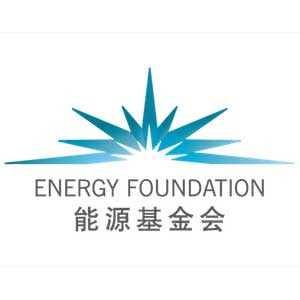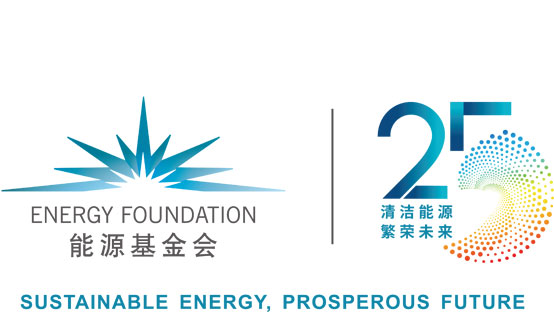Helping Chinese Buildings Go Green
Over the past decades, the rapid growth of China’s economy and the accompanying urbanization has turned many areas of the country into vast construction sites. According to statistics on 2018, energy consumption for buildings in China accounts for nearly 50 percent of the total, after taking account of all the related items, such as production and transportation of building materials. This number will continue to rise as the urbanization process continues.

“Without significant mitigation from the building sector, China will not be able to meet its international commitment of peaking carbon emissions around 2030. And the goal of global carbon neutrality by 2050 cannot be achieved,” said Dr. Wang Zhigao, director of the Low Carbon Cites Program at Energy Foundation China.
Green and low-carbon development in the sector has been a top priority for the foundation. In the past 20 years, it has promoted the entire process of setting up China’s green building standards, from voluntary to mandatory, and from individual buildings to entire urban blocks. The foundation has also assisted in promoting and improving nearly zero-energy buildings.
Helping Set Up the First National Standard on the Evaluation of Green Buildings

In 2006, China’s first national “Standard for Green Building Evaluation” (hereinafter referred to as the Standard) was released, proposing the concept of green buildings which entailed conservation of energy, land, water, and materials, environmental protection, and pollution reduction. This officially launched a government campaign on green building evaluation in China and prompted the building sector to move toward decarbonization.
After the introduction of the Standard, we focused our attention on its implementation across the country. Since 2007, Energy Foundation China has provided significant support to research and pilot projects in places like Shanghai, Shenzhen, Sichuan, Tianjin, Chongqing, and Hainan, tailoring them to suit local conditions.
After the devastating magnanitude-8.0 Sichuan earthquake in 2008, the foundation provided support to a series of projects on school design and standard setting in order to build durable and green schools for the children in the disaster zone. For this purpose, we invited Robert K. Watson, the founder of the LEED Green Building Rating System in the United States, Dr. Khee Poh Lam, Dean of the School of Design and Environment at the National University of Singapore, and other well-known experts from around the world. Eventually, more than 20 schools were rebuilt as green schools in the area without much of an increase in cost. The new schools provide energy-efficient lighting, as well as natural ventilation and heating that is comfortable for occupants. These projects became models for school building at the time, and helped the development of design guidelines and technical manuals, which later informed the housing department of Sichuan when it decided to release the province’s “Design Standards for Green Schools.”
On the road to building a green and low-carbon city, Shenzhen, a megacity now boasting a bigger GDP than its close neighbor Hong Kong, has been an excellent pioneer and a model for major urban centers in China. As early as 2008, Energy Foundation China and the Shenzhen Housing Development Bureau signed a memorandum of cooperation to provide support for green buildings research in the city and to build it into a showcase area for green buildings in China. In 2010, Shenzhen took a lead nationally with its mandatory requirement for government subsidized housing to follow green building standards; in 2012, it released the “Plan for Guangming New District (2007-2020),” becoming the first city in the country to have mandatory requirement on green buildings for all of the constructions in an entire district. This represented the first systematic practice of the green city concept. “It’s a milestone for green building development, going from voluntary to mandatory, providing us with an excellent model for practices on the ground with regard to the promotion of the Standard in the country,” Dr. Wang said.
Since then, the district has become the first national demonstration zone on green buildings and is among the first batch of eco-city pilot projects of the Ministry of Housing and Urban-Rural Development, receiving an award of 50 million RMB, or $7.3 million, from the state.
“For more than a decade, Energy Foundation China has leveraged its resources and expertise, to provide research and education support to the improvement of planning systems, policy systems, and institutions for building energy efficiency. It has supported research on related standard systems, technical systems, and promotion models. It is an active participant and a staunch supporter of the green development and has made outstanding contributions to the revolution of energy production and consumption in the building sector,” said Wu Yong, the president of the China Association of Building Energy Efficiency.
Pushing Toward Net Zero Emissions
When promoting the Standard, we found that one of the major obstacles to the development of green buildings in China is the generally held belief that a green building is much more expensive than an ordinary building.
In order to fully understand the cost of green buildings, in 2011, Energy Foundation China provided support to the first economic analysis of green buildings in China. The study found that the extra cost associated with an entry-level one-star green building has dropped to very close to zero. In order to further allay people’s concern about cost, in April 2012, the Ministry of Finance and the Ministry of Housing and Urban-Rural Development jointly proposed to speed up development of China’s green buildings through government subsidies and other means. This official edict reflected many of the research findings that Energy Foundation China supported.
In the initial stage, the Standard is a one-size-fits-all national standard. It does not differentiate between different types of buildings and varying climate across regions. Therefore, large-scale implementation has faced many difficulties at the ground level. The foundation held the belief that it is necessary to develop a more detailed standard system based on differentiation. Since 2008, it has supported research on green building evaluation standards tailored to types of building and climate at both the national and the local levels. And it has provided solid researches and help to the roll-out of green building evaluation standards for school campuses and hospitals, and local standards in Beijing and Hainan. In addition, the foundation provided support for five consecutive years to the building-up of green building evaluation capabilities from national to local levels, helping practitioners in this area to familiarize themselves with evaluation methods and to successfully carry out evaluation work. All of these efforts provided strong support to the expansion of green buildings in China.
At both the national and local levels, foundation was laid for the introduction of more stringent policy measures on green buildings. In January 2013, China released a Green Building Action Plan, which set out a roadmap for green building development by 2020, and made it compulsory for government-funded buildings to implement relevant standards from 2014 onwards. Research supported by Energy Foundation China was recognized and reflected in this official document. “The release of this policy document marks the beginning of the green building trend of China’s building industry, going from voluntary to compulsory, and from individual buildings to entire urban areas,” Dr. Wang said.
By the end of 2018, cities and towns across the country had built a total of 2.5 billion square meters of green buildings, accounting for nearly 40 percent of new residential construction in urban areas. Energy Foundation China realized that the popularity of green buildings in China represented an opportunity to shift to a higher level. “We found that the green building certification at that time was heavy on the design side and light on operation, with design label for green building accounting for 95 percent, while label for actual building operation only at 5 percent. In order to guarantee quality and performance of the concerned buildings, we must have strict requirements for actual energy savings during the operation phase,” Dr. Wang said. To this end, in 2018, Energy Foundation China supported a study to revise the Standard. The study proposed that green building certification should be based on actual energy-saving data for a 12-month period. Later, this proposal was submitted to decision-makers when they considered revising the standard.

The China Academy of Building Research building, one of China’s first nearly zero-energy buildings
Photo Courtesy by China Academy of Building Research
In recent years, the trend internationally is to push buildings to be as close to zero energy consumption as possible until reaching net zero. This is also something new being promoted by the foundation and its partners. Minimal building energy consumption must come from enhanced thermal insulation, renewable energy, and advanced energy recovery technologies—this ideal is also known as Green Building 2.0. In 2019, the Ministry of Housing and Urban-Rural Development issued its “Technical Standard for Nearly Zero-Energy Buildings (NZEBs),” which for the first time stated targets on energy consumption control for ultra-low-energy buildings, NZEBs, and zero-energy buildings.
For the future, Dr. Wang believes that energy-saving renovation of existing buildings and electrification in the sector are important new directions in order to reduce carbon emissions from buildings. “We are trying to combine green financing with energy-saving refitting of existing buildings, seeking to enlist the help of market forces to transform and upgrade buildings, so as to achieve economies of scale and marketization of high-performance buildings such as NZEBs and even zero-energy buildings,” he said. “And given the future is likely to have a high level of renewable energy based power supply, electrification in the building sector will play an important role in reducing end-users’ environmental pollution and carbon emissions. To this end, we are firmly continuing our exploration for a truly green future.”



